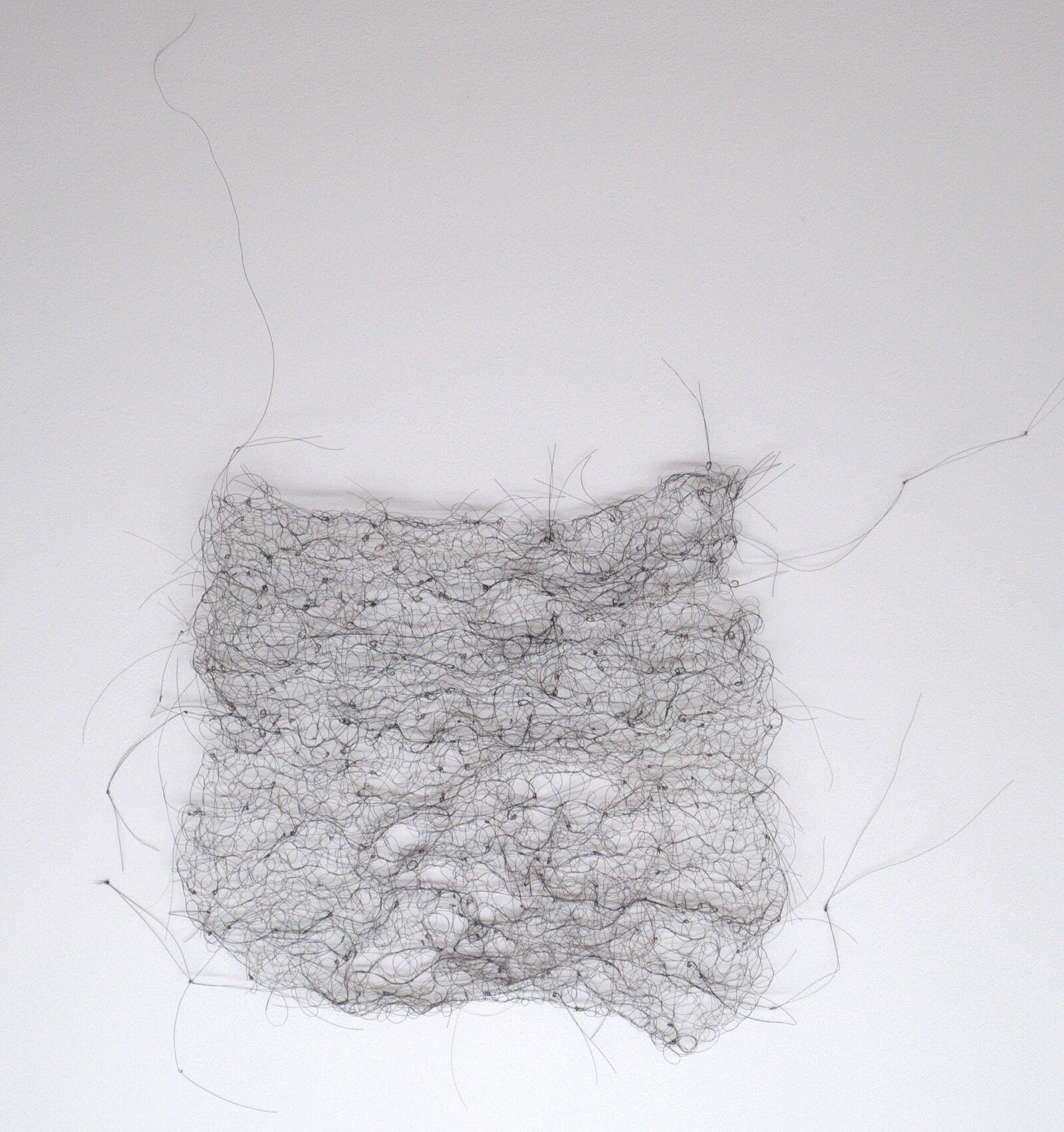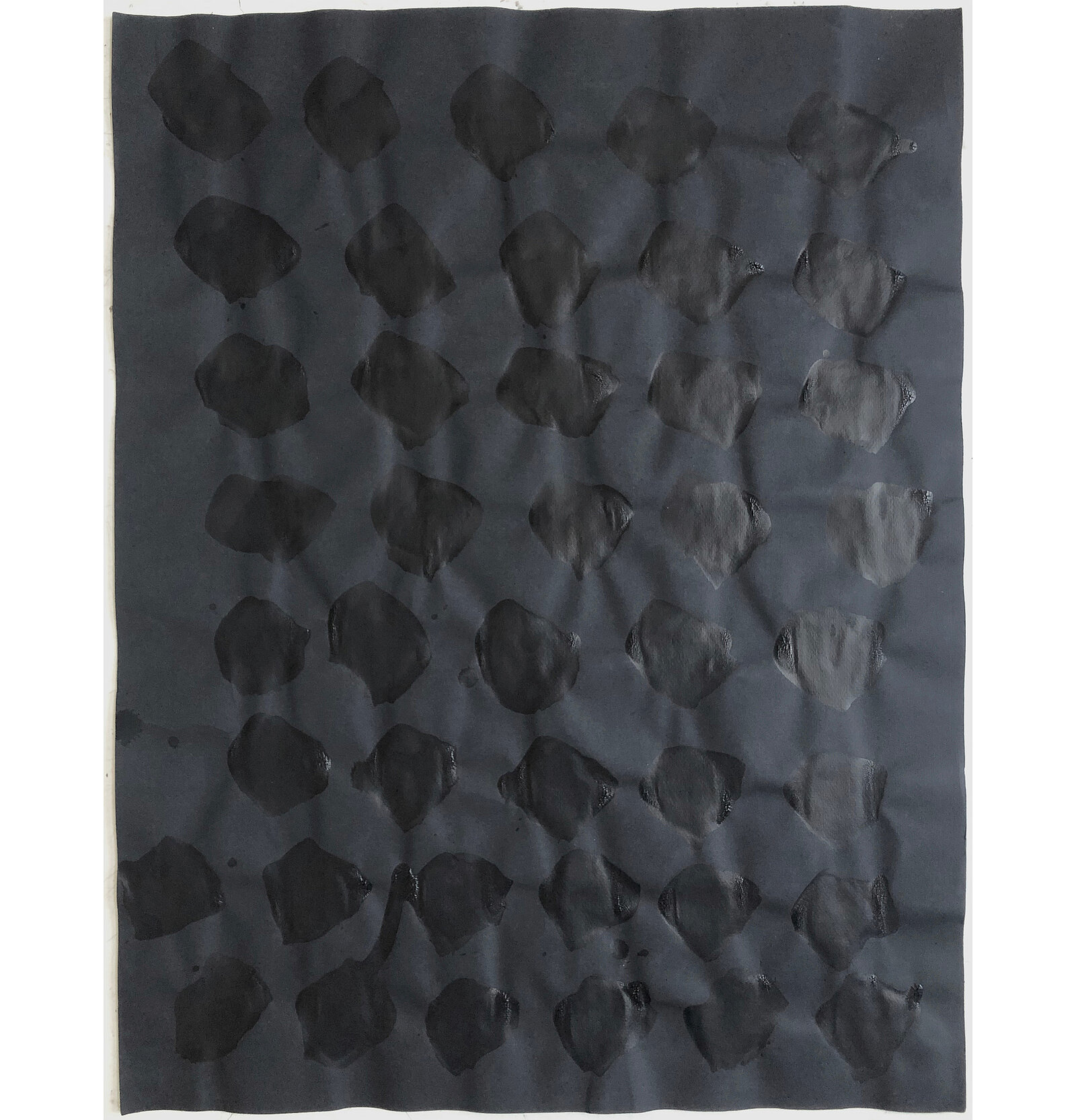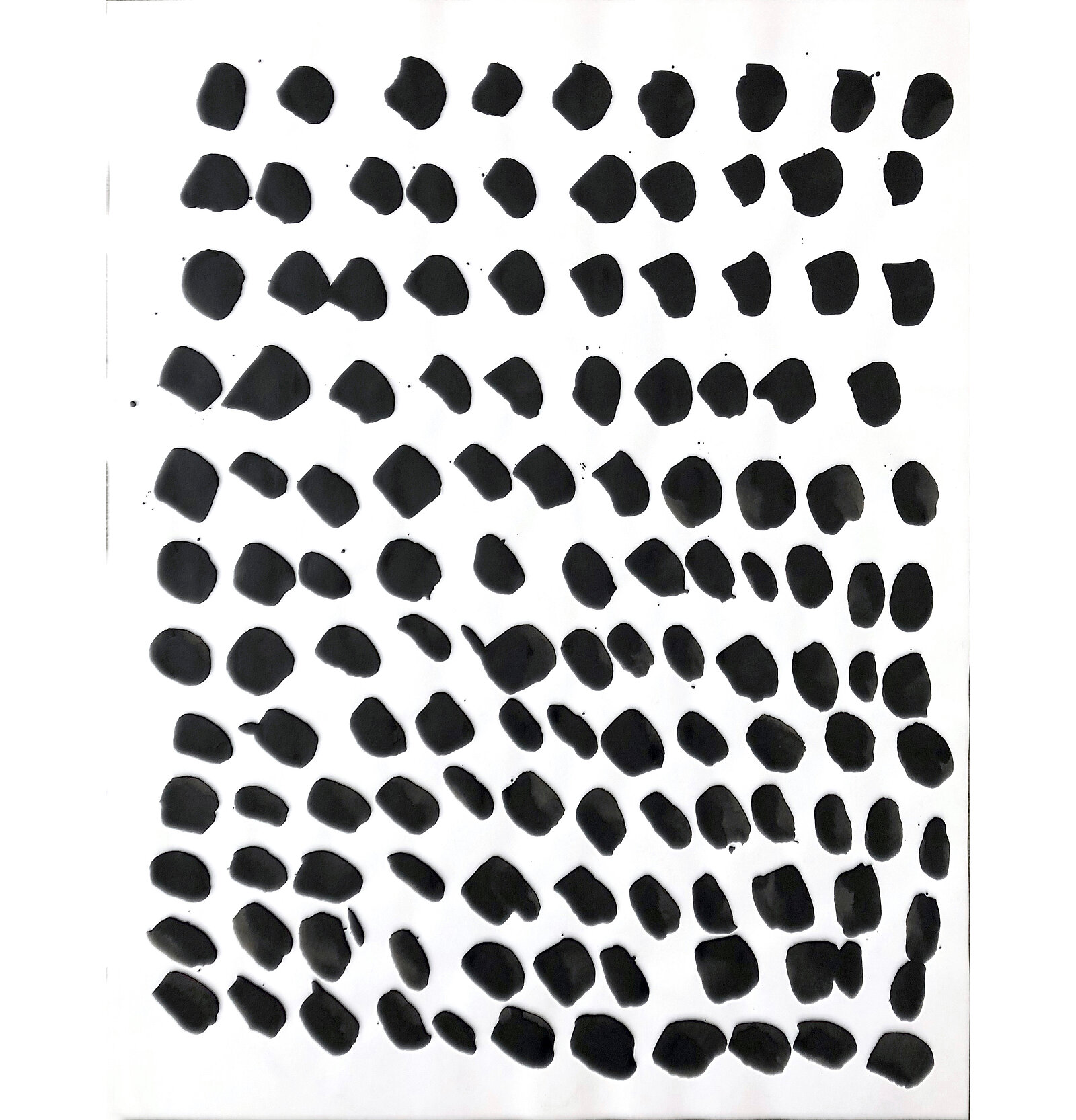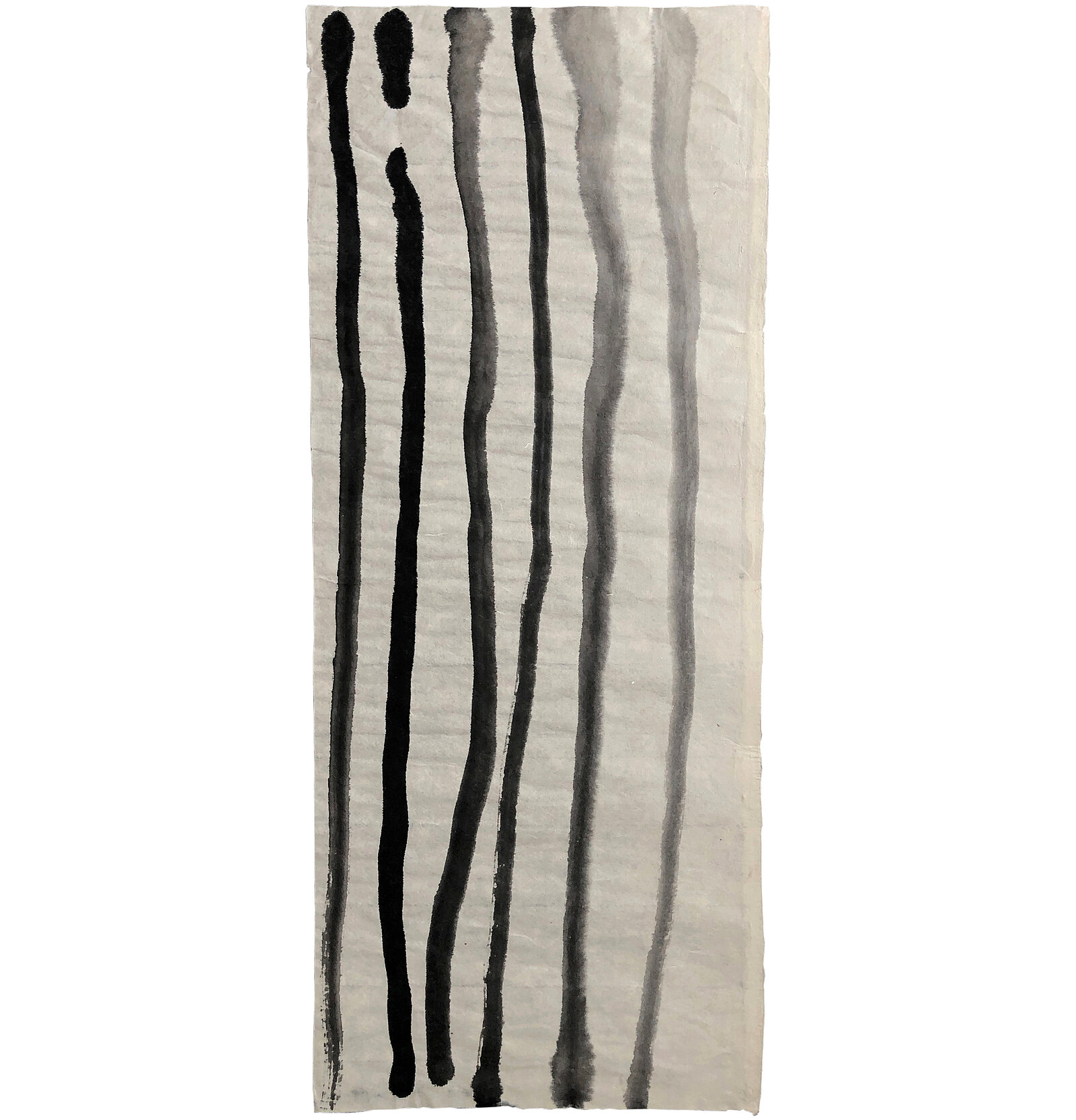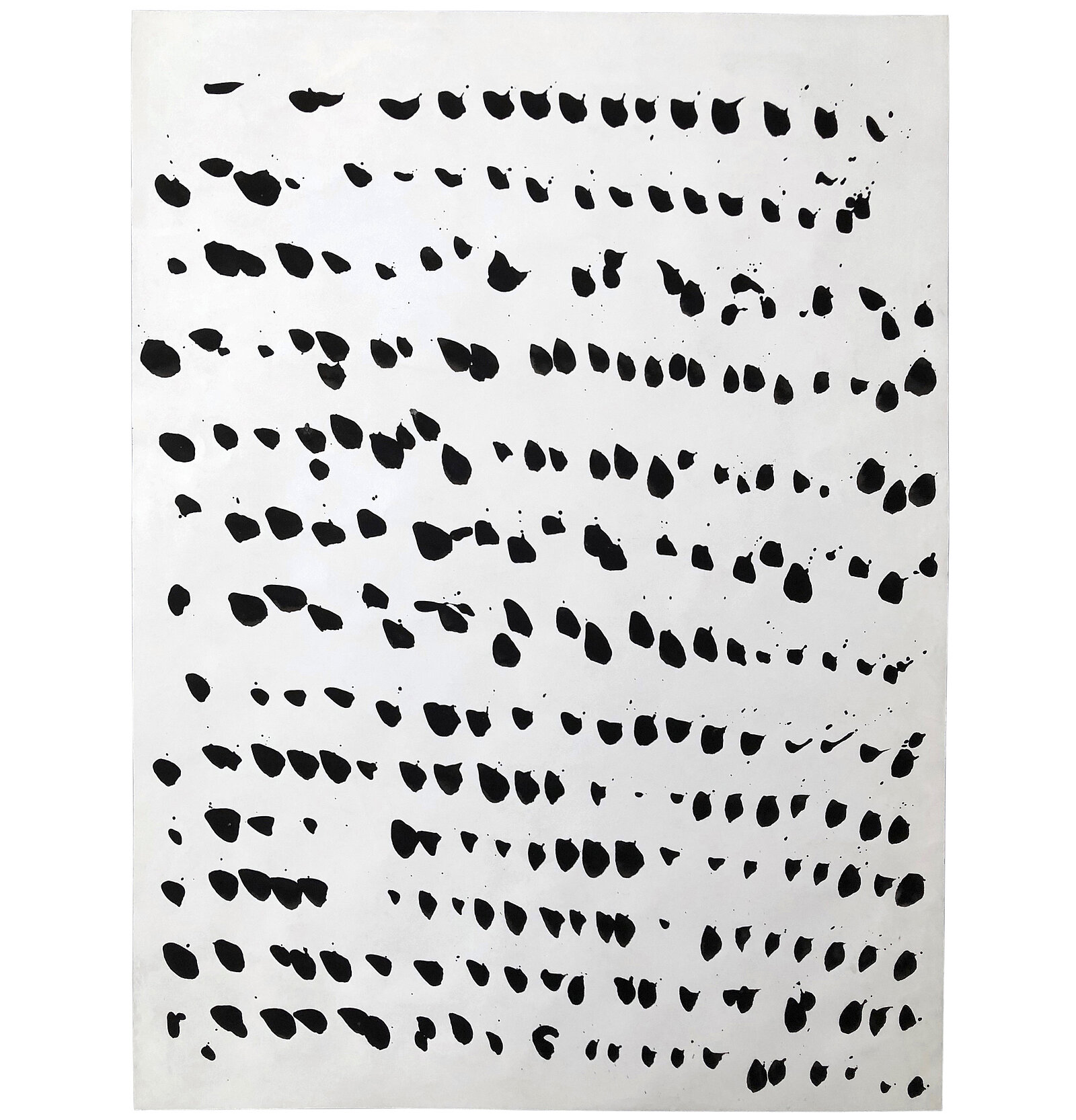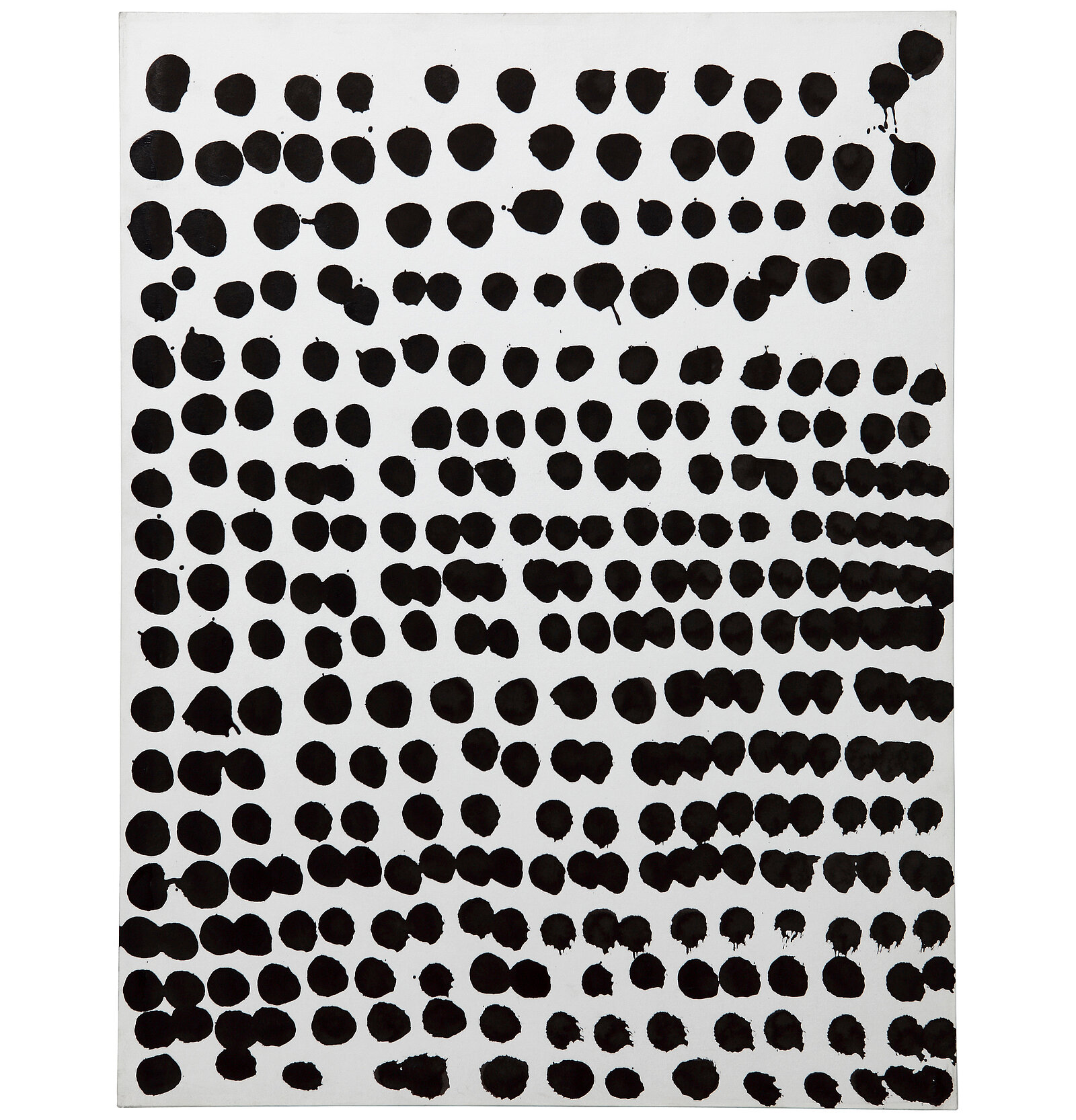ART CITIES: Paris-Pierrette Bloch
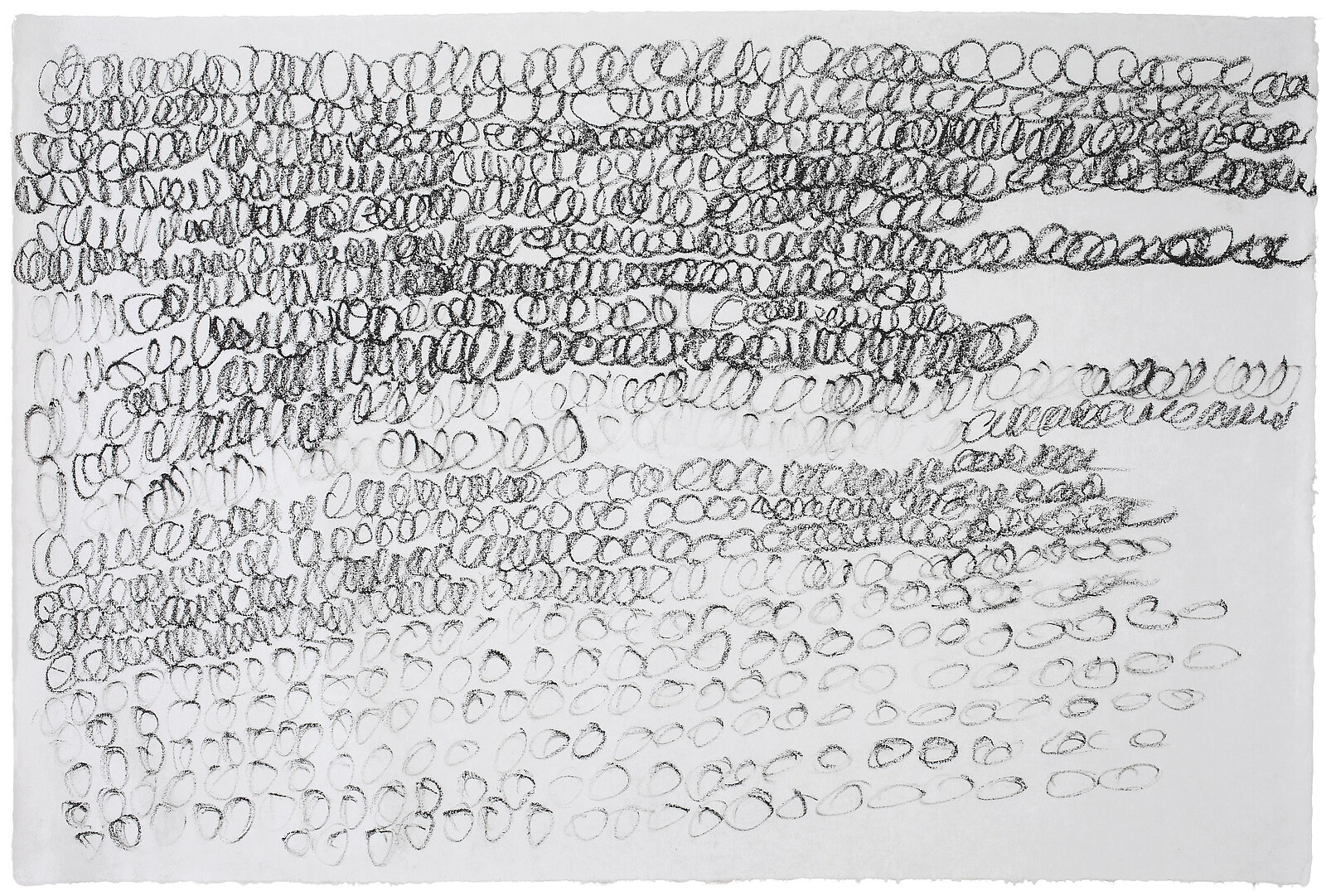 Since the 1950s, Pierrette Bloch’s work has moved toward a form of abstraction that remains free from any aesthetic category and relies on rhythm, the ambivalence between fullness and emptiness, and the contrast between black and white. It is a subtle body of work, which the artist develops with a great economy of means, creating series based on the repetition of elementary patterns – dots, curls, writing – and a near absence of color.
Since the 1950s, Pierrette Bloch’s work has moved toward a form of abstraction that remains free from any aesthetic category and relies on rhythm, the ambivalence between fullness and emptiness, and the contrast between black and white. It is a subtle body of work, which the artist develops with a great economy of means, creating series based on the repetition of elementary patterns – dots, curls, writing – and a near absence of color.
By Dimitris Lempesis
Photo: Galerie Karsten Greve Archive
In the exhibition “Différence et repetition” are on show 70 works illustrating the variety of Pierrette Bloch’s pioneering artistic approach, based on the reiteration of a gesture that is ever new. Deeply rooted in the practice of drawing, which she brought to the fore of contemporary art research, Pierrette Bloch’s work displays an innovative approach through the artist’s ability to imbue abstraction with a new sensitivity and poetry. Born in 1928, she and the artists of her generation such as Cy Twombly and Pierre Soulages, shared the desire to capture the essence of art by using the morphological components of pictorial art. For over sixty years, dots, lines and the relationships she formed with her surfaces, depending on the material used, were the founding principles of Pierrette Bloch’s work. The artist expressed her creative force through a seemingly silent oeuvre. Her work is characterised by a sparsity of means – ink, oil pastels, pastels and horsehair – and colors – black and white – with which she was able to create an extremely free oeuvre. Her work thus becomes a journey for the gaze, which moves over the surface to the rhythm of a dance created by the relationships between the marks of the creative gesture and the support. It was towards the end of the 1960s that Pierrette Bloch abandoned painting to explore collage and drawing. While her collages were initially architectonic compositions made of inked, torn pieces of paper layered on hardboard, they evolved in around 1970 to 1972 to integrate bits of drawings she had initially discarded. She cut them using scissors and reassembled the fragments thus obtained in a deconstructed patchwork that thrummed with a new rhythm. In her Indian ink on paper works – which Pierrette Bloch began to systematically produce from 1971 – she accorded the surface of the support and the marks left by the ink the same artistic value: the relationship between black and white, like that between filled and empty space, was what made the unity of the works. As black is the predominant color of the compositions, it marks the support and resonates through its unlimited range of hues, always a result of chance – a drop of water more or less, a hesitation in the artist’s gesture, stronger pressure from her hand. Each drawing thus invites viewers on a ramble in which the unexpected is the rule. Pierrette Bloch’s privileged relationship with the present transformed her drawings into adventures for the spirit wherein the serial nature of the artist’s gesture underlines its diversity, not its sameness. Her work reveals a temporality linked to the current moment, a spontaneity and the joy of playing a game the rules of which – if it even has any – were formulated as the image was being created. It is this lack of laws, this deliberate transcendence, that differentiates Pierrette Bloch’s work from writing, with which she has, nevertheless, often been associated. For her, it was the language generating artistic creation that directed the deployment of signs, not the search for a meaning. Shapes, space and color are thus the morphological components that make up her discourse and that can be found in the horsehair works Pierrette Bloch produced from 1979. Her horsehair mesh is indissociable from her inks on paper insofar as they are linked by the same repetitive gesture, the same part left to chance and nuance, and even the same planarity. From around 1982 to 1984, the mesh unwound and became horizontal and separate from the surface of the wall. “I chose horsehair thread for its linear aspect, its sharpness, its shadow”, said Pierrette Bloch. Like her works on paper, her horsehair sculptures are striking in their diversity, color, density and rhythm. The knots, sometimes tight and sometimes loose, are arrayed along the nylon in compositions that are up to 12 metres long. The horsehair mesh sometimes unwinds and becomes one with the transparent thread. Sometimes, on the contrary, the knots cluster in the same place and form seemingly dozens of ellipses on the support, like whole notes on a staff. Finally, the artist’s gesture becomes bolder, freer in places, the horsehair liberating itself from its mesh and taking up room on the thread to project its shadow in loops and arabesques on the supporting wall. Through the variety of the showcased works – ink on paper in various formats, collage, horsehair mesh and thread – produced between 1971 and 2017, this new exhibition shows the scope and diversity of Pierrette Bloch’s work and pays tribute to that great soul of abstract art. While it is true she lived a modest life, keeping away from worldly spheres, her relationships with the most influential artists of her generation were sincere and enduring. Her work resonated not only with the experiments conducted in the field of abstract art in the 1950s and 1960s, but was also pioneering in the supports chosen and materials used, far outside the limits imposed by traditional painting. With her curious spirit and way of playing with matter, Pierrette Bloch was considered a precursor to the Supports/Surfaces group, which was operational in France between the end of the 1960s and the beginning of the 1970s.
Photo: Pierrette Bloch, Untitled, 2015, Oil crayon on paper, 70 x 100 cm (27 1/2 x 39 1/3 in), Frame: 78 x 111 x 4 cm, signed verso: P. Bloch, Courtesy Galerie Karsten Greve
Info: Curator: Lucia Pesapane, Galerie Karsten Greve, 5 rue Debelleyme, Paris, France, Duration: 7/5-29/6/2024, Days & Hours: Tue-Sat 10:00-19:00, https://galerie-karsten-greve.com/
